
The pot-de-fer was a primitive cannon made of iron. It was used by the French in the Hundred Years' War. [1] The name means "iron pot" in French. In Italy, pots-de-fer were known as vasi or vasii, meaning "pot" or "vase". [2] [3]

The pot-de-fer was a primitive cannon made of iron. It was used by the French in the Hundred Years' War. [1] The name means "iron pot" in French. In Italy, pots-de-fer were known as vasi or vasii, meaning "pot" or "vase". [2] [3]

Though occasionally made with cast bronze, the pot-de-fer was essentially an iron [2] bottle with a narrow neck. It was loaded with powder and an iron arrow-like bolt, feathered with iron. It is believed that the middle of the bolt was likely wrapped in leather for a snug fit, necessary to enhance the thrust from the gaseous pressure within the cannon. [3] However, this feature is not shown in manuscript illuminations. The cannon was set off through a small-diameter touchhole, where a red-hot wire could be thrust to set off an explosion and fire the cannon. [1] [4]
The pot-de-fer was first depicted in a manuscript, De officiis regum of 1326, by Walter de Millimete, [5] an illuminated manuscript of 1327 that was presented to Edward III upon his accession to the English throne. [6] The manuscript shows a large vase lying on a table, with an armored man behind it holding a rudimentary linstock near the bottom (in this case the linstock would have held a red-hot wire, heated in a brazier, rather than a slow match). A bolt, called a garrot, protrudes from the muzzle. [5] Although illustrated in the treatise, no explanation or description was given. [7]
The first confirmed usage of a pot-de-fer in Germany was during the Eltz Feud between 1331 and 1337 at a siege of Eltz Castle. [8]
The pot-de-fer was used by the French in the Hundred Years' War in a raid on Southampton and in battles in Périgord, Cambrai, and Quesnoy. They may also have been used against the Scottish by the English. [2]
An early reference to the name in French is as pot de fer a traire garros (an iron jug for throwing arrows). [9] Such a 'pot de fer' had a bottle shape, which may have suggested its name. [4]

The unusual vase-like shape of the cannon, coupled with the depicted arrow projectile, caused many modern historians to doubt the efficiency — or even existence — of the weapon. [7] In order to establish these points, researchers at the Royal Armouries reconstructed and trialled the weapon in 1999. The walls of the chamber were very thick to prevent explosion, leaving a cylindrical bore which was loaded by a wooden arrow with bronze flights (also reconstructed based on archeological findings), of 135 cm length. Estimating the size of the cannon from the illustrated man standing beside it, the reconstructed cannon was 90 cm long, and 40 cm at its widest point; cast in bronze the reconstruction weighed 410 kg. The subsequent trials showed that the gun was not powerful, firing the arrow only 180 m at most; a larger charge of powder resulted only in the destruction of the arrow. [7]
A cannon is a large-caliber gun classified as a type of artillery, which usually launches a projectile using explosive chemical propellant. Gunpowder was the primary propellant before the invention of smokeless powder during the late 19th century. Cannons vary in gauge, effective range, mobility, rate of fire, angle of fire and firepower; different forms of cannon combine and balance these attributes in varying degrees, depending on their intended use on the battlefield. A cannon is a type of heavy artillery weapon.

Gunpowder, also commonly known as black powder to distinguish it from modern smokeless powder, is the earliest known chemical explosive. It consists of a mixture of sulfur, charcoal, and potassium nitrate (saltpeter). The sulfur and charcoal act as fuels while the saltpeter is an oxidizer. Gunpowder has been widely used as a propellant in firearms, artillery, rocketry, and pyrotechnics, including use as a blasting agent for explosives in quarrying, mining, building pipelines, tunnels, and roads.

Early thermal weapons, which used heat or burning action to destroy or damage enemy personnel, fortifications or territories, were employed in warfare during the classical and medieval periods.
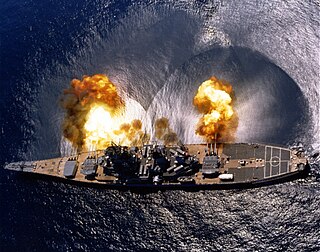
Naval artillery is artillery mounted on a warship, originally used only for naval warfare and then subsequently used for more specialized roles in surface warfare such as naval gunfire support (NGFS) and anti-aircraft warfare (AAW) engagements. The term generally refers to powder-launched projectile-firing weapons and excludes self-propelled projectiles such as torpedoes, rockets, and missiles and those simply dropped overboard such as depth charges and naval mines.

The hand cannon, also known as the gonne or handgonne, is the first true firearm and the successor of the fire lance. It is the oldest type of small arms as well as the most mechanically simple form of metal barrel firearms. Unlike matchlock firearms it requires direct manual external ignition through a touch hole without any form of firing mechanism. It may also be considered a forerunner of the handgun. The hand cannon was widely used in China from the 13th century onward and later throughout Eurasia in the 14th century. In 15th century Europe, the hand cannon evolved to become the matchlock arquebus, which became the first firearm to have a trigger.
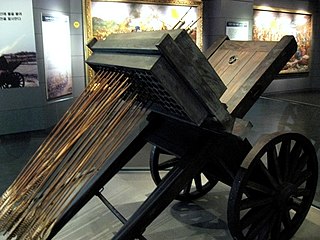
The hwacha or hwach'a was a multiple rocket launcher and an organ gun of similar design which were developed in fifteenth century Korea. The former variant fired one or two hundred rocket-powered arrows while the latter fired several dozen iron-headed arrows or bolts out of gun barrels. The term was used to refer to other war wagons or other cart-based artillery in later periods, such as that developed by Byeon Yijung in the 1590s.
Naval artillery in the Age of Sail encompasses the period of roughly 1571–1862: when large, sail-powered wooden naval warships dominated the high seas, mounting a large variety of types and sizes of cannon as their main armament. By modern standards, these cannon were extremely inefficient, difficult to load, and short ranged. These characteristics, along with the handling and seamanship of the ships that mounted them, defined the environment in which the naval tactics in the Age of Sail developed.
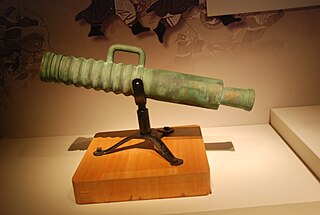
Cannons appeared in Korea by the mid 14th century during the Goryeo dynasty and quickly proliferated as naval and fortress-defense weapons. Major developments occurred throughout the 15th century, including the introduction of large siege mortars as well as major improvements that drastically increased range, power, and accuracy.

Gunpowder artillery in the Middle Ages primarily consisted of the introduction of the cannon, large tubular firearms designed to fire a heavy projectile over a long distance. Guns, bombs, rockets and cannons were first invented in China during the Han and Song dynasties and then later spread to Europe and the Middle East during the period.
The history of cannons spans several hundred years from the 12th century to modern times. The cannon first appeared in China sometime during the 12th and 13th centuries. It was most likely developed in parallel or as an evolution of an earlier gunpowder weapon called the fire lance. The result was a projectile weapon in the shape of a cylinder that fired projectiles using the explosive pressure of gunpowder. Cannons were used for warfare by the late 13th century in the Yuan dynasty and spread throughout Eurasia in the 14th century. During the Middle Ages, large and small cannons were developed for siege and field battles. The cannon replaced prior siege weapons such as the trebuchet. After the Middle Ages, most large cannons were abandoned in favor of greater numbers of lighter, more maneuverable field artillery. New defensive fortifications such as bastions and star forts were designed specifically to better withstand artillery sieges. Cannons transformed naval warfare with its deadly firepower, allowing vessels to destroy each other from long range. As rifling became more commonplace, the accuracy of the cannon was significantly improved, and they became deadlier than ever, especially to infantry. In World War I, a considerable majority of all deaths were caused by cannons; they were also used widely in World War II. Most modern cannons are similar to those used in the Second World War, including autocannons—with the exception of naval guns, which are now significantly smaller in caliber.

The Huolongjing, also known as Huoqitu, is a Chinese military treatise compiled and edited by Jiao Yu and Liu Bowen of the early Ming dynasty (1368–1683) during the 14th century. The Huolongjing is primarily based on the text known as Huolong Shenqi Tufa, which no longer exists.
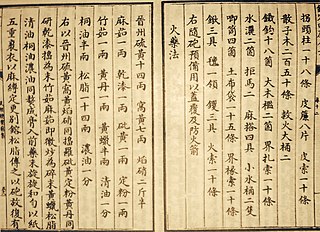
Gunpowder is the first explosive to have been developed. Popularly listed as one of the "Four Great Inventions" of China, it was invented during the late Tang dynasty while the earliest recorded chemical formula for gunpowder dates to the Song dynasty. Knowledge of gunpowder spread rapidly throughout Asia and Europe, possibly as a result of the Mongol conquests during the 13th century, with written formulas for it appearing in the Middle East between 1240 and 1280 in a treatise by Hasan al-Rammah, and in Europe by 1267 in the Opus Majus by Roger Bacon. It was employed in warfare to some effect from at least the 10th century in weapons such as fire arrows, bombs, and the fire lance before the appearance of the gun in the 13th century. While the fire lance was eventually supplanted by the gun, other gunpowder weapons such as rockets and fire arrows continued to see use in China, Korea, India, and this eventually led to its use in the Middle East, Europe, and Africa. Bombs too never ceased to develop and continued to progress into the modern day as grenades, mines, and other explosive implements. Gunpowder has also been used for non-military purposes such as fireworks for entertainment, or in explosives for mining and tunneling.

Military forces of the Ottoman Empire used a variety of weapons throughout the centuries. The armoury in Topkapı Palace has a large collection showing select items.

A gun is a device designed to propel a projectile using pressure or explosive force. The projectiles are typically solid, but can also be pressurized liquid, or gas. Solid projectiles may be free-flying or tethered. A large-caliber gun is also called a cannon.

Walter de Milemete was an English scholar who in his early twenties was commissioned by Queen Isabella of France to write a treatise on kingship for her son, the young prince Edward, later king Edward III of England called De nobilitatibus, sapientiis, et prudentiis regum in 1326. The Treatise includes images of siege weapons and what is probably the first illustration of a firearm: a pot-de-fer. One of the marginal border illustrations in the Milemete Treatise shows a soldier firing a large vase-shaped cannon, the arrow-shaped projectile is seen projecting from the cannon which is pointed at a fortification. In the 1331 siege of Cividale, German knights used guns which were probably very similar to Milemete weapons.
Gunpowder weapons in the Song dynasty included fire arrows, gunpowder lit flamethrowers, soft shell bombs, hard shell iron bombs, fire lances, and possibly early cannons known as "eruptors". The eruptors, such as the "multiple bullets magazine eruptors", consisting of a tube of bronze or cast iron that was filled with about 100 lead balls, and the "flying-cloud thunderclap eruptor", were early cast-iron proto-cannons that did not include single shots that occluded the barrel. The use of proto-cannon, and other gunpowder weapons, enabled the Song dynasty to ward off its generally militarily superior enemies—the Khitan led Liao, Tangut led Western Xia, and Jurchen led Jin—until its final collapse under the onslaught of the Mongol forces of Kublai Khan and his Yuan dynasty in the late 13th century.

The Heilongjiang hand cannon or hand-gun is a bronze hand cannon manufactured no later than 1288 and is the world's oldest confirmed surviving firearm. It weighs 3.55 kg and is 34 centimeters long. The Heilongjiang hand cannon was excavated during the 1970s in Banlachengzi, a village in Acheng District, Heilongjiang province, China. It was found alongside other bronze artifacts made in the style of the Jurchen Jin Dynasty. The hand cannon was probably used in battles fought nearby in Banlachengzi in 1287 and 1288. The History of Yuan states that a Jurchen commander by the name of Li Ting led a group of soldiers equipped with hand cannons into a military camp in 1288, as part of an anti-rebellion campaign for the Yuan dynasty. The cannon currently resides at the Heilongjiang Provincial Museum in Harbin, China.
This is a timeline of the history of gunpowder and related topics such as weapons, warfare, and industrial applications. The timeline covers the history of gunpowder from the first hints of its origin as a Taoist alchemical product in China until its replacement by smokeless powder in the late 19th century.
Cetbang were cannons produced and used by the Majapahit Empire (1293–1527) and other kingdoms in the Indonesian archipelago. There are 2 main types of cetbang: the eastern-style cetbang which looks like a Chinese cannon and is loaded from the front, and the western-style cetbang which is shaped like a Turkish and Portuguese cannon, loaded from the back.
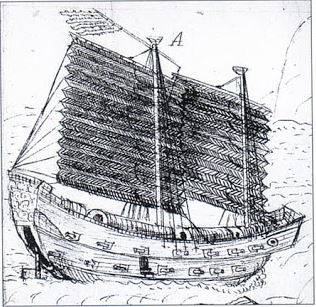
The Ming dynasty continued to improve on gunpowder weapons from the Yuan and Song dynasties as part of its military. During the early Ming period larger and more cannons were used in warfare. In the early 16th century Turkish and Portuguese breech-loading swivel guns and matchlock firearms were incorporated into the Ming arsenal. In the 17th century Dutch culverin were incorporated as well and became known as hongyipao. At the very end of the Ming dynasty, around 1642, Chinese combined European cannon designs with indigenous casting methods to create composite metal cannons that exemplified the best attributes of both iron and bronze cannons. While firearms never completely displaced the bow and arrow, by the end of the 16th century more firearms than bows were being ordered for production by the government, and no crossbows were mentioned at all.